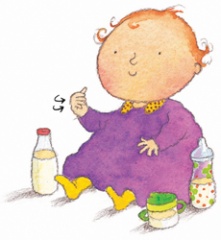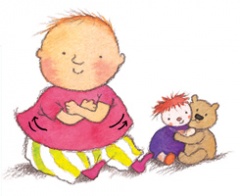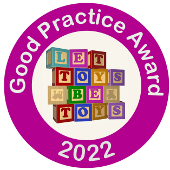
What is Baby Signing?
'Baby Signing' describes the practice of using sign language with hearing babies to enable them to communicate before they can talk. Babies have a natural ability to use gesture, and signing is simply an extension of this.
By introducing simple signs at an early age, we can enable babies
to communicate their emotions and their needs. Babies are able
to coordinate and control their hand muscles much earlier than the muscles used for speech, meaning that they can produce recognisable signs from as young as seven months.
Signing is rapidly growing in popularity in Britain, but has been used in America for years and is the norm in American nurseries. Many British nurseries are now training staff in British Sign Language.
 Contrary to concerns that signing with babies may inhibit speech, research shows that signing actually helps babies to develop a wider vocabulary. It is vital, however, that signs are used in conjunction with speech to provide babies with a multi-sensory environment.
Contrary to concerns that signing with babies may inhibit speech, research shows that signing actually helps babies to develop a wider vocabulary. It is vital, however, that signs are used in conjunction with speech to provide babies with a multi-sensory environment.
Using the standard signs of British Sign Language means that your baby's signs will not only be understood by you, but also by others who sign.
Benefits
- reduces frustration
- strengthens the bond between baby and parent
- can help the child to speak earlier than usual
- helps to develop a wider vocabulary
- leads to a higher than average literacy level
- leads to better communication between hearing
and hearing-impaired children.

Getting Started
- Introduce only three or four signs to start with. The most successful seem to be
milk
,eat
,more
andbed
. - Use certain signs before an event to enable your child to anticipate
it (i.e.bath
,nappy
). - Repetition is important. Your baby will not sign to you immediately
but will recognise signs. - Be patient and don't get frustrated. Signing should be a fun part
of your everyday interaction. - Your child's signs may differ from yours. Don't worry; the signs
will evolve, just like speech. - Facial expression is important and will help your baby to understand
the sign. - There may be signs that your child will never make but will still
understand perfectly. - Use the signs in context. The first aim is for your child to make
a connection between the sign and what it represents. - Only sign key words, don't try to sign a whole sentence.
- Always say the word when you sign, never sign in silence.
- Introduce signs that have a particular interest for your child.
- Have fun!


 Go to USA site
Go to USA site Go to AUS site
Go to AUS site


Email this page to a friend